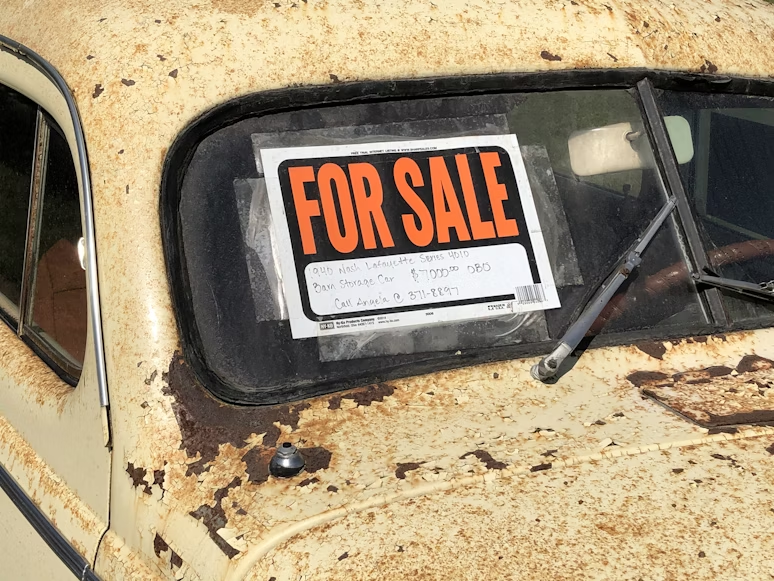Few sights turn heads faster than a low-slung Italian sports car or a big-winged track monster. The sticker prices, however, push most of us into day-dream mode. Listings that show crashed supercars for sale can change the math. These high-performance machines still frighten banks, insurers, and many repair shops, so they often reach the salvage market at deep discounts. With careful research, clear budgeting, and honest self-assessment, an enthusiast can turn a written-off exotic into a garage trophy for a fraction of showroom cost. This guide explains the process in plain language, using practical steps and common-sense examples.
Why Supercars Get Totaled So Easily
Modern supercars rely on advanced materials and tight manufacturing tolerances. A small parking-lot scrape that would dent an ordinary sedan can crack carbon fiber, bend lightweight alloy suspension arms, or smash adaptive sensors. Labor rates at factory-approved shops climb well past two hundred dollars per hour, and parts rarely sit on local shelves. An insurance adjuster needs only a short parts list and limited labor hours before repair costs exceed seventy percent of the pre-loss value. When that threshold hits, the car is declared a total loss and moves to a vehicle auction or specialist breaker yard.
Common salvage triggers include:
- Cosmetic front-corner impacts with airbag deployment
- Theft recoveries missing wheels, seats, or body panels
- Minor side scrapes that fracture carbon-fiber tubs
- Storm flooding that stops electronics but leaves engines untouched
While the term “totaled” sounds fatal, the real story depends on damage location, parts availability, and buyer skills.
Where To Find Crashed Supercars
National Online Salvage Exchanges
Websites such as AutoBidMaster feed live inventory from Copart and other salvage car auctions. Users can filter by brand, engine size, mileage, and title status. If auction pressure feels risky, look for listings with a Buy It Now button so you can buy salvage cars without bidding.
Specialist Broker Yards
Certain firms purchase salvage supercars in bulk, verify titles, and resell through private listings. Prices sit slightly above open auctions but include detailed photos, compression tests, and sometimes borescope images of cylinder walls.
Dealer Trade-In Outlets
High-end dealerships occasionally take damaged exotics on trade, then clear them at quietly advertised lots. Networking with sales staff or trusted wholesalers can reveal hidden gems before they reach a public salvage auto auction.
Reading Listings Like A Shop Foreman
A dozen photos and a brief damage note can reveal more than you might think. Focus on these areas:
- Panel Gaps – Uneven spacing at door edges points to possible chassis twist.
- Wheel Alignment – A wheel that sits too far back in its arch often signals a bent suspension link or cracked upright.
- Carbon-Fiber Weave – Wavy patterns under clearcoat show stress lines. Replacement panels cost far more than steel or aluminum.
- Interior Water Lines – Flooded vehicles may look dry in exterior shots. Check carpet edges and seat rails for silt or rust streaks.
- Cluster Power-On – A lit dashboard proves at least partial electronic health and confirms mileage.
Whenever distance or price makes mistakes expensive, pay for a third-party inspection. Independent technicians can run ECU scans, verify engine rotation, and measure frame reference points.
Budgeting With A Four-Line Worksheet
Keep the math simple and realistic. Before bidding, add these numbers:
- Purchase price
- Auction or broker fees
- Transport and short-term storage
- Mandatory parts and labor to pass inspection
Include taxes, title fees, and a twenty-percent contingency fund for hidden issues like cracked radiators or seized ceramic brake calipers. Compare the total with rebuilt-title asking prices for the same model. If your projected finish cost is not at least twenty-five percent lower, the bargain could vanish after the first surprise.
Choosing A Project That Matches Your Skills
Three broad tiers exist:
- Cosmetic-Level Repairs – Scratched bumpers, missing wheels, or lightly dented aluminum panels. Needed tools include basic sockets, torque wrenches, and paintless dent repair access.
- Intermediate Structural Work – Front-corner hits with mild subframe bends, damaged radiators, and deployed airbags. Tools expand to include portable pull bars, composite rivet guns, a professional scan tool, and alignment equipment.
- Expert-Only Restorations – Flooded electronics, cracked carbon tubs, or hybrid battery damage. These require factory bonding agents, certified carbon welders, and six-figure parts budgets.
Be honest about time and money. Paying a dealership body shop to bond a carbon diffuser may erase every dollar saved at auction.
Safely Transporting High-Value Salvage Cars
Supercars often ride on ultra-low suspensions. Request soft-strap tie-downs and low-angle ramps. Confirm whether brakes function; non-rolling vehicles need dollies and winch service. Choose enclosed shipping to protect fragile paint and privacy. Storage yards typically allow only a three-to-five-day pickup window, after which fees climb. Schedule your carrier before the bidding clock ends.
Title And Insurance Considerations
Each state DMV publishes a guide for converting a salvage title to rebuilt. Expect to submit:
- Pre-repair and post-repair photos
- Itemized receipts for structural parts, airbags, and lighting units
- A completed safety inspection or certified alignment sheet
Insurance carriers treat rebuilt exotics cautiously. Some offer liability only, while specialty insurers grant full coverage after an appraisal. Contact agents before spending, especially if you plan to finance future upgrades.
Common Pitfalls And Practical Fixes
- Electronic Gremlins – Multiplex wiring exposes the whole car to a single ground fault. Keep spare body control modules from donor vehicles and budget for dealer re-flashing.
- Long Parts Waits – A cracked composite headlight for a limited Ferrari run can backorder for a year. Search breaker yards across continents or line up 3D-printed repair panels as a stopgap.
- Hidden Frame Capsule Damage – Some Italian chassis bond aluminum crash structures to carbon tubs. Look for adhesive separation signs around rivet lines.
- Auction Fever – Bright paint and famous badges push bidders beyond logic. Set a ceiling before the auction and step away if prices surge.
Donor Drivetrains And Part-Out Strategies
Supercar powertrains turn up in kit cars and grassroots race builds. Buying a damaged exotic just for its engine, transaxle, and wiring loom can make financial sense if resale demand for leftover shell pieces is strong. Research current market prices for V-10 crate motors or active aero components. When done right, selling carbon seats, airbags, and ceramic rotors can pay for the original purchase, leaving you with a near-free drivetrain.
Putting It All Together
Shopping crashed supercars for sale is less gamble and more calculated project when you bring clear eyes and steady math. Study photos like a body-shop estimator, price every sensor and clip, verify transport costs, and respect title rules in your state. Use a disciplined budget to decide whether to rebuild, part out, or create a track-only toy. Done right, yesterday’s write-off can roar back to life and turn heads at every car meet, proof that smart planning and elbow grease can unlock horsepower most drivers only see through showroom glass.

